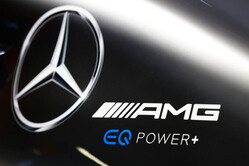


29/04/2017
NEWS STORY
 Following its analysis of the first three rounds of the season, the FIA claims that there is clear convergence in the performance of the top three engines. Indeed, the governing body claims that they are now within 0.3s of one another.
Following its analysis of the first three rounds of the season, the FIA claims that there is clear convergence in the performance of the top three engines. Indeed, the governing body claims that they are now within 0.3s of one another.
In May last year, Fabrice Lom, the FIA's Head of Powertrain, revealed that performance convergence was one of four aspect the governing body was working on - the others being the reduction of cost, the obligation to supply and improving the sound.
It was revealed that following the opening three races of this season, an analysis of every lap by every engine would be carried out in order to create an index of performance. The FIA would then seek to translate the index of performance into a lap of the Barcelona circuit targeting a gap of around 0.3s covering all the engines.
According to the FIA's Charlie Whiting, with the exception of Honda this has been achieved.
Speaking ahead of the fourth round of the championship, Whiting revealed that the Strategy Group was informed of the results at its meeting earlier this week.
"Part of an agreement last year was a power unit convergence element," he said, referring to the agreement between the manufacturers. "It was a system that everyone would assess after the first three races on whether we had power unit convergence. This was defined as three out of four power unit manufacturers being within three tenths of a second of each other around Barcelona.
"It is far more complicated than 0.3s around Barcelona," he admitted, "because there was a very detailed methodology for simulating this based on all the data that only we have.
"We took all the data that we could from the first three races, from all the power units - we have some simulation engineers in Geneva and Fabrice Lom - and they sat down and analysed all this data and, using the method that was agreed by the manufacturers to derive from these simulations, what it meant in terms of lap time around Barcelona.
"This was done," he confirmed. "We announced the results of this to the Strategy Group the other day and we have convergence.
"Convergence is defined by the top three being within 0.3s around Barcelona," he added. "This only applies to the power unit, of course. So the top three power units are within 0.3s."
Unsurprisingly, Red Bull is understood to have queried the results, clearly believing that its Tag-Heuer (Renault) unit is not within 0.3s of the Mercedes and Ferrari engines.
"They all agreed to it," said Whiting, when asked if the teams accepted the results. "The power unit manufacturers agreed to this methodology. The four engine manufacturers sat down for hours and thrashed out this rather complex method, so we can't renegotiate it.
"Obviously this was done among the power unit manufacturers not the teams," he added, "so I think there may be a little element of surprise about this. But we do have convergence as defined by this system.
"It's something that's been in place for a year or so now, a bit more than a year. They've all known exactly how it was going to be done and that's how it's been done, and those are the results."
At a time Stoffel Vandoorne is set to become the first driver to take a grid penalty this year, Whiting was keen to point out that the test was to measure the success of the removal of the loathed token system in terms of freeing up engine development rather than an actual bid to manipulate convergence. To that end, there is no plan to aid Honda.
"It wasn't a matter of helping anybody," he said. "It was a matter of establishing the measures that had been introduced, losing the tokens and all those sorts of things that were aimed at helping convergence, had worked. Part of the obligation to supply but it was not totally connected with obligation to supply but it was part of the whole agreement."
He confirmed that the situation will be monitored throughout the season to ensure the 0.3s gap is maintained.